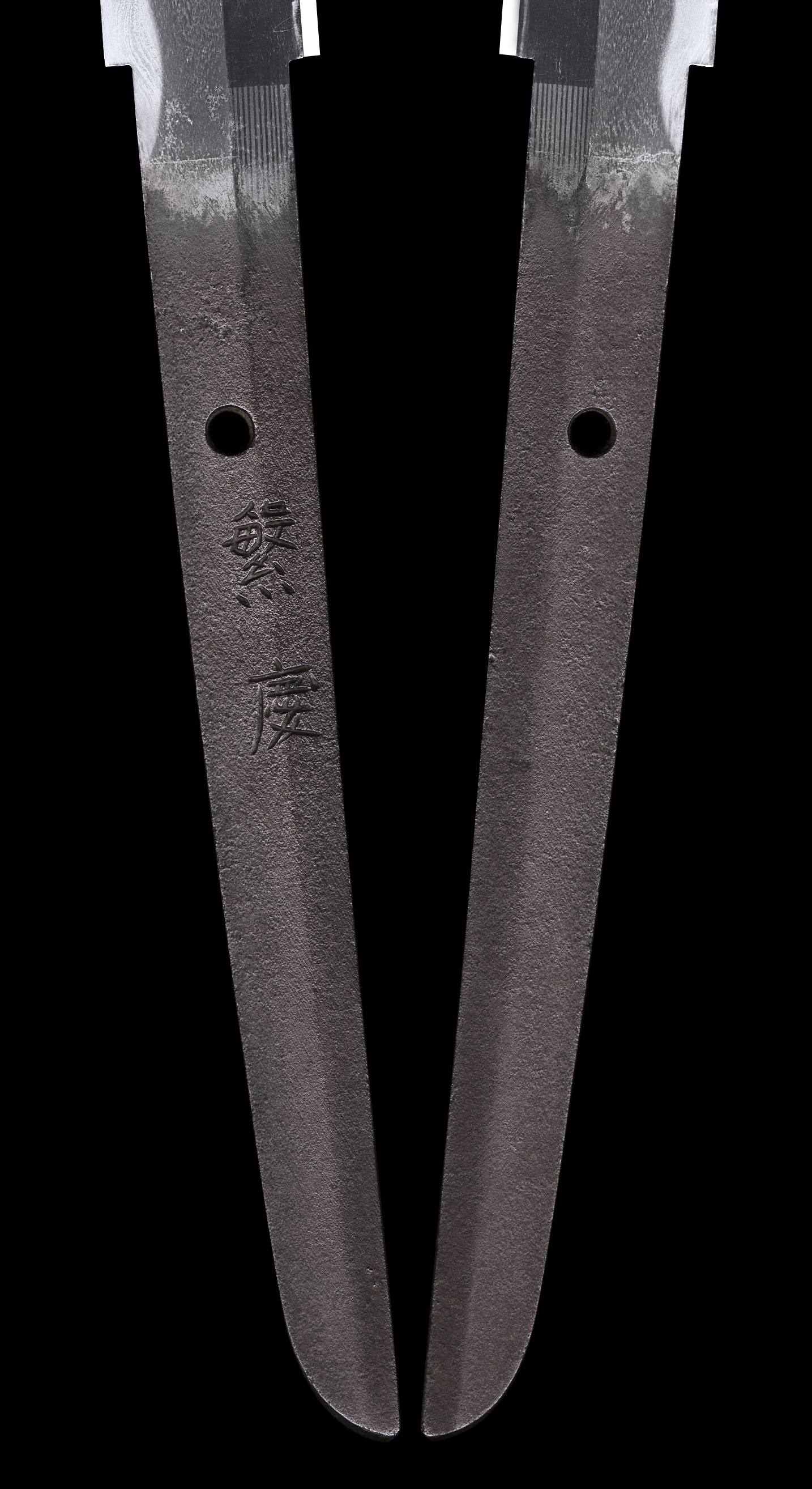Previous answer is
Hankei
Special feature : The long, wide, thick blade with suitable curve and long
Kissaki which is called Keicho style. Bo-hi is engraved on both sides of the blade.
The blade is Mitsumune style and Hamachi is long. Itame-hada and Oitame-hada mixed with Jinie attach and Chikei work which is called Hijiki hada.
Niedeki Notare Gunome-midare with deep Nioikuchi and soft Habuchi and in Hamon, there are many Sunagashi, Kinsuji scatter and Midarekomi style Boshi with Hakikake and Sunagashi Kinsuji work very active.
Noda Hankei was born at Mikawa province and called Noda Zenshiro Kiyotaka and learned how to make matchlocks guns from his father. He moved to Edo with his master Ieyasu and studied under the Akagari Sohachiro and made matchlocks by himself at first. After that he moved to Sunpu with Shogun Tokugawa Ieyasu, he started to forge swords. At the first ages he named himself as Kiyotaka and after his master Ieyasu passed away, he worked for Hidetada the second Shogun and returned to Edo Nihonbashi area and kept forging swords.
==============================================
Appraisal Quiz #418 (December 17, 2016)
Who made this sword do you think ?
==============================================
Hints. ※The picture will be enlarged
Shape : Shinogi-Zukuri style, slim blade Osuriage but having nice curve, standard Kissaki. Bo-hi engraved on both sides.
Jitetsu : Itame-hada with Jinie attach, Chikei and Midare-Utsuri appears many on the surface.
Hamon : Ko-Choji, Ko-Gunome, Ko-Notare mixed hamon with small Ashi, Yo scatter and Tobiyaki such like Yubashiri. Ko-Nie attach with Kinsuji Sunagashi working.
================================================
Answer will be posted at next Appraisal Quiz.
================================================
(Please acknowledge not replying to mail about Appraisal Quiz by our convenience.)

